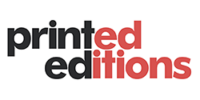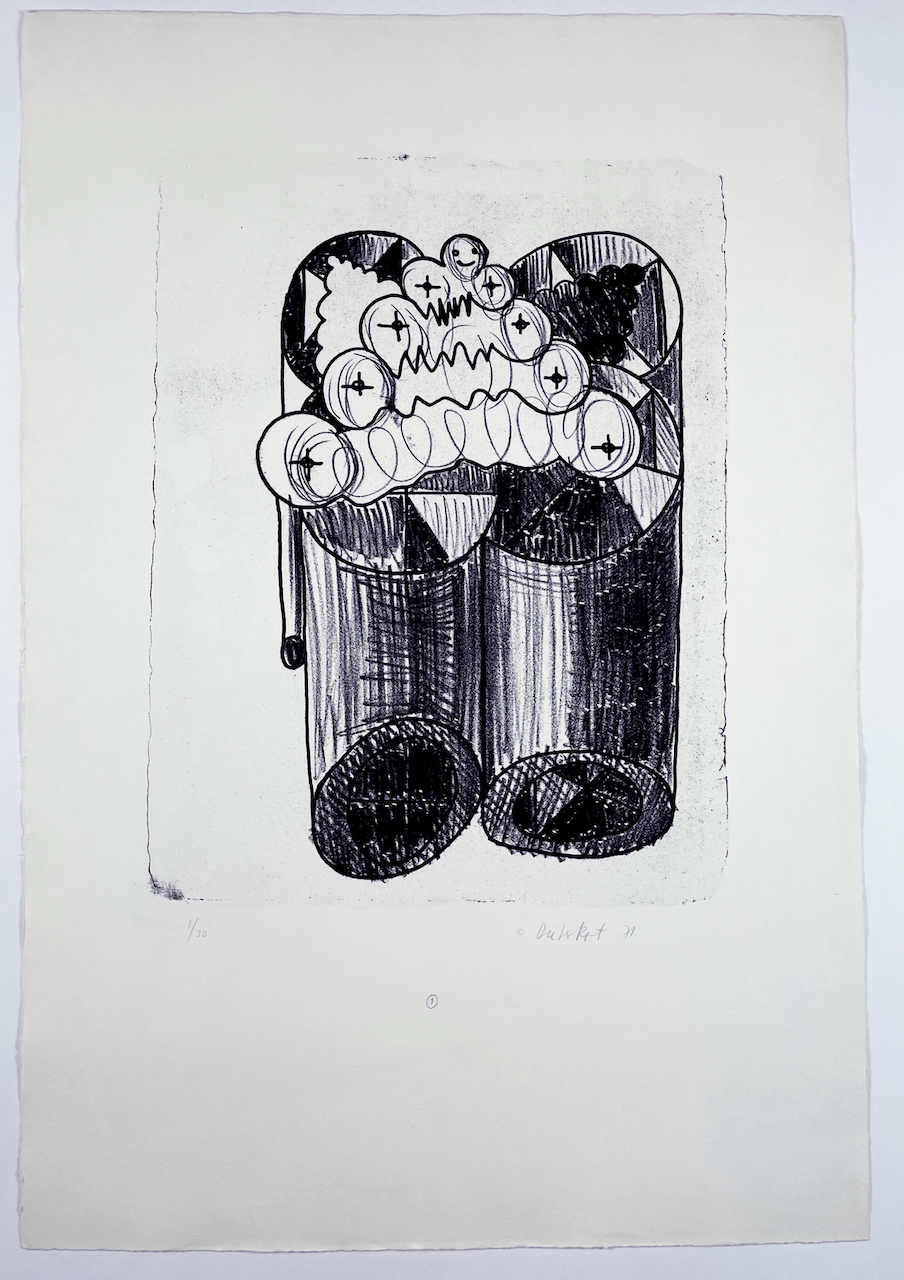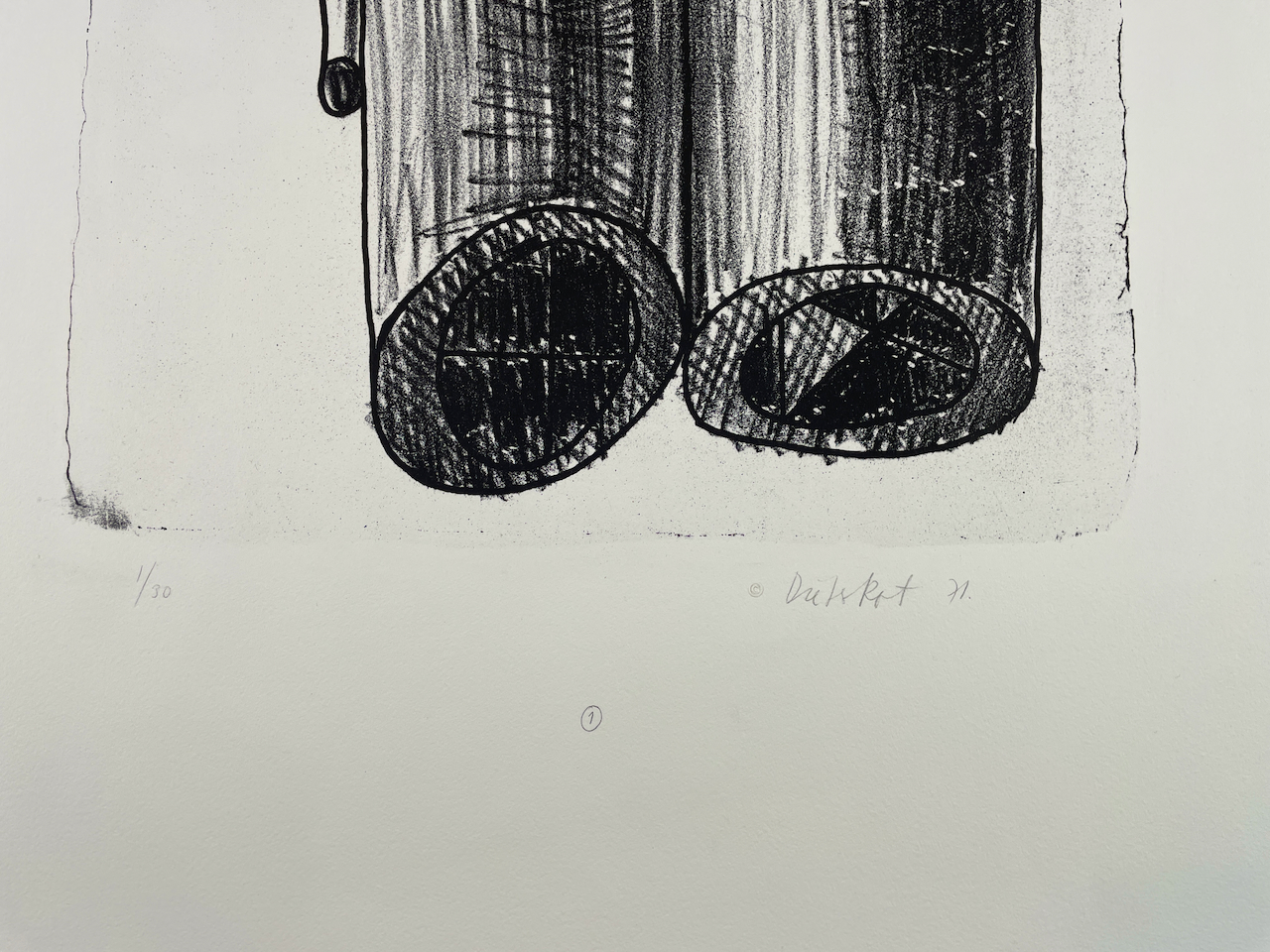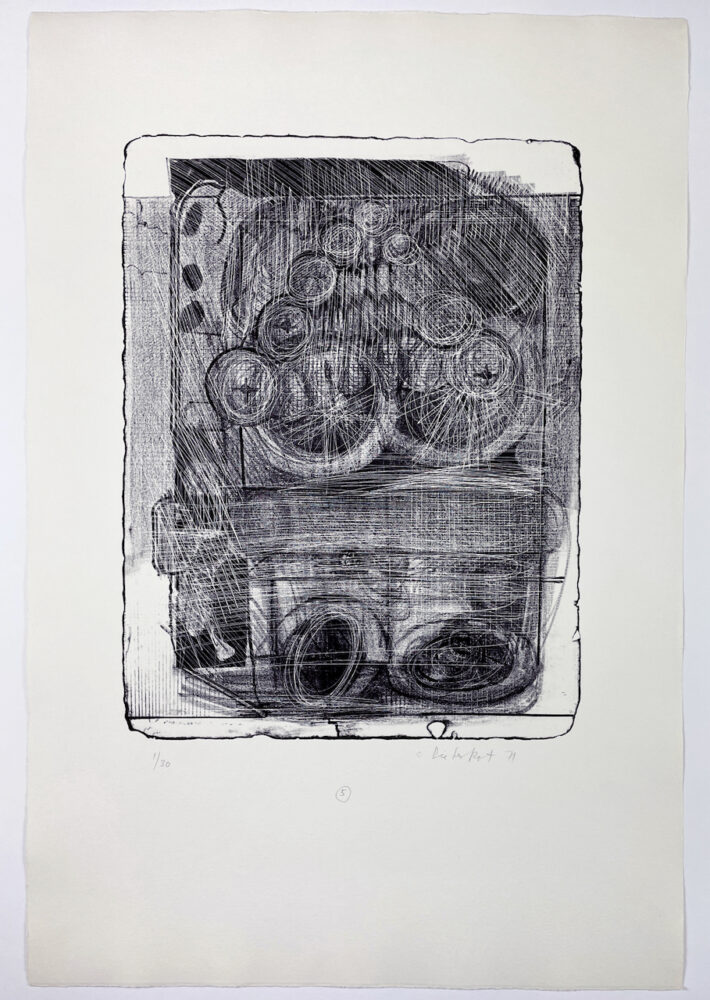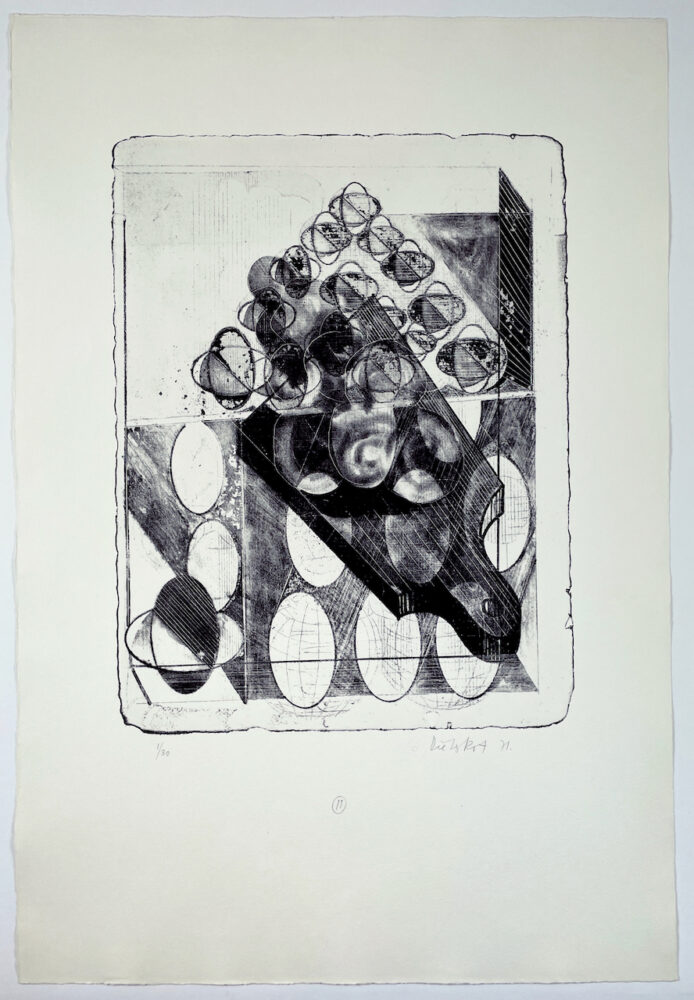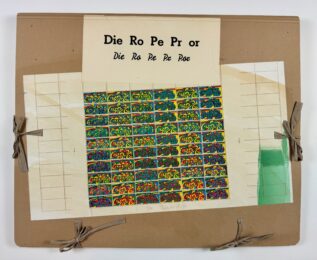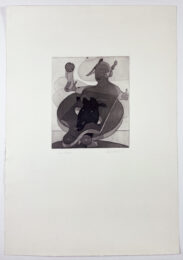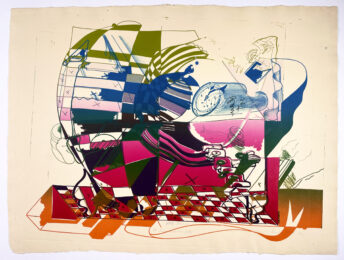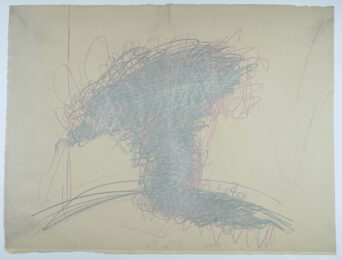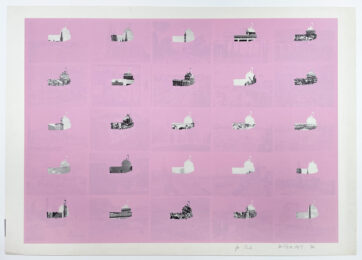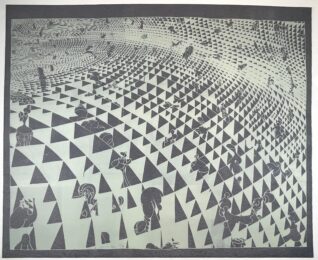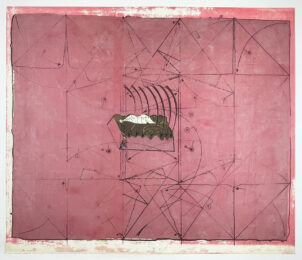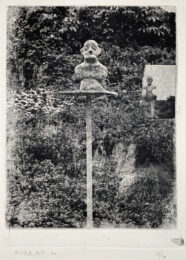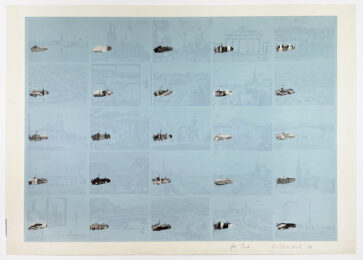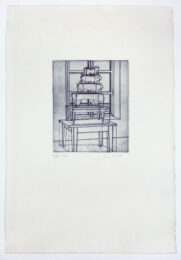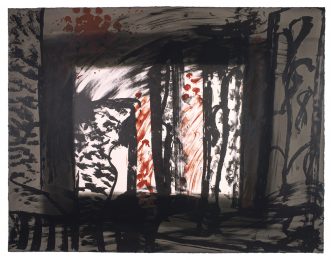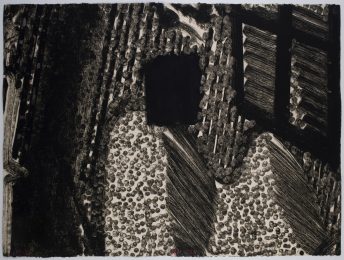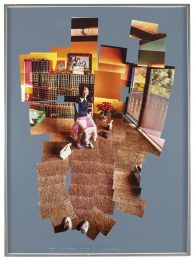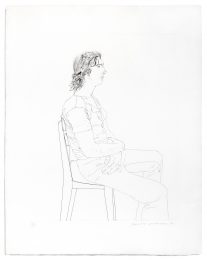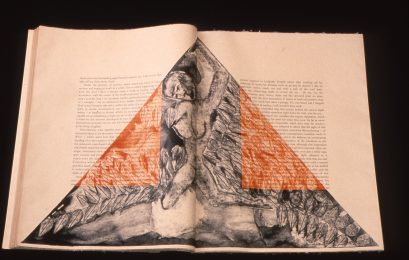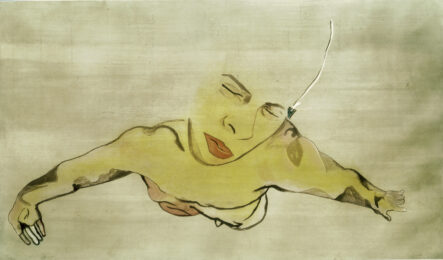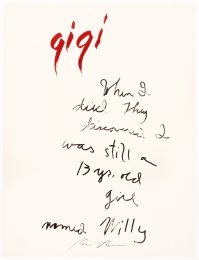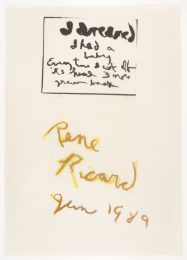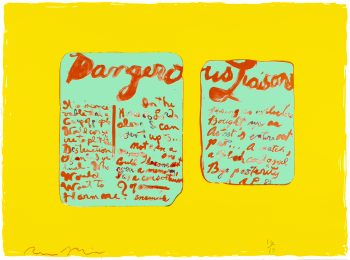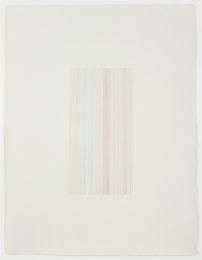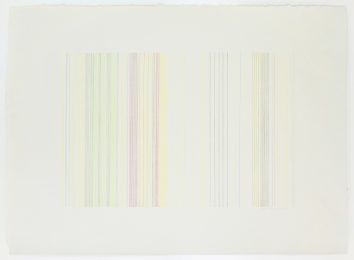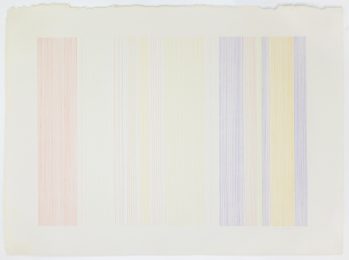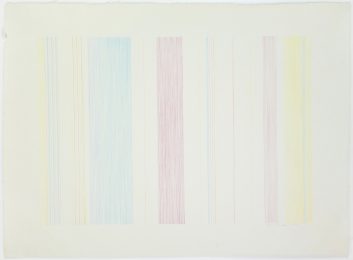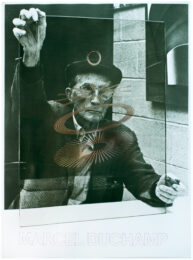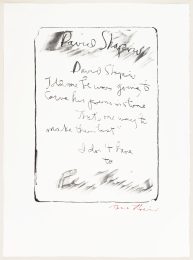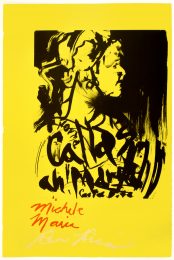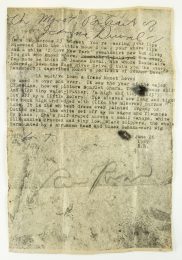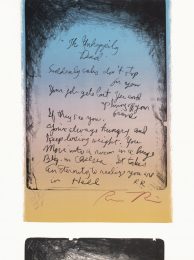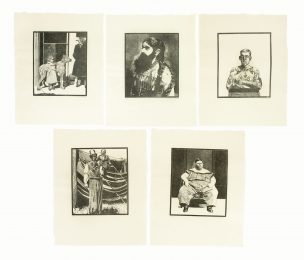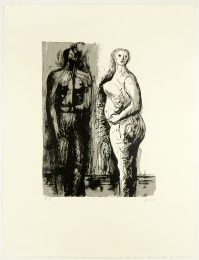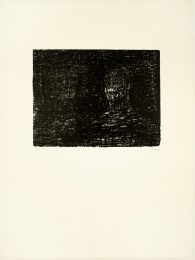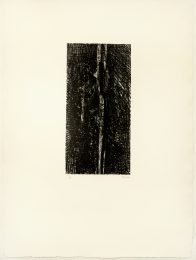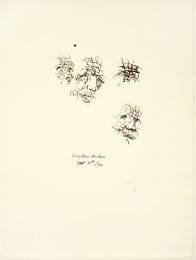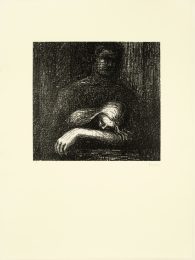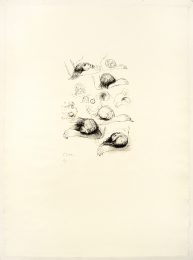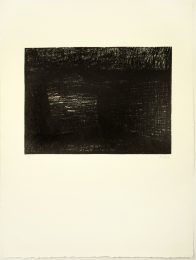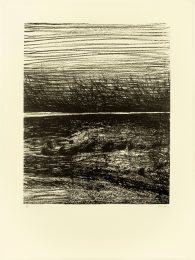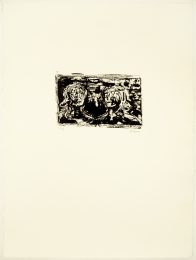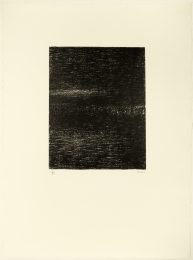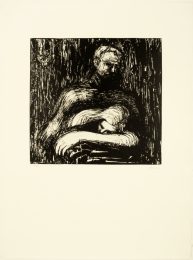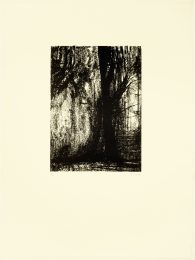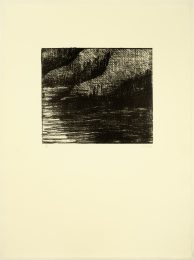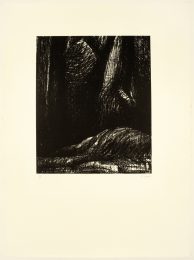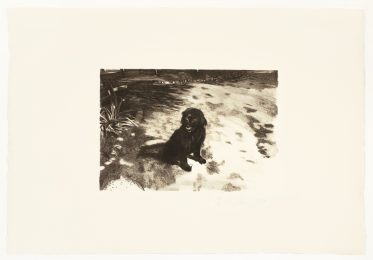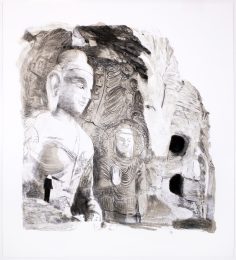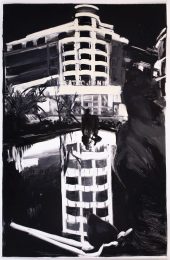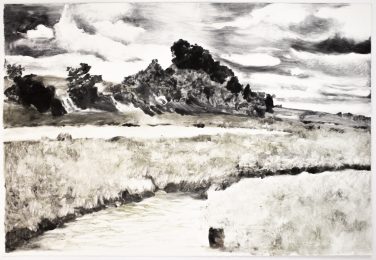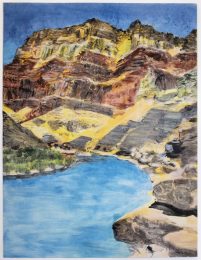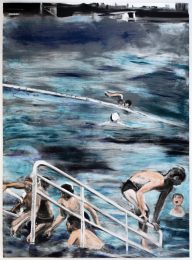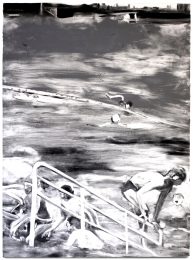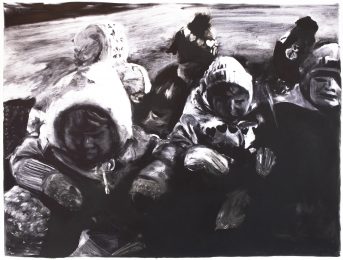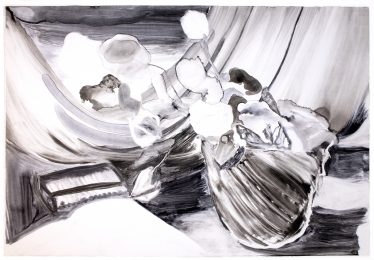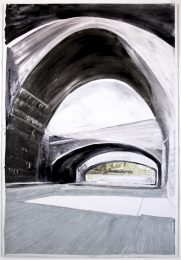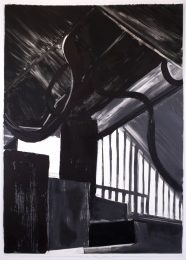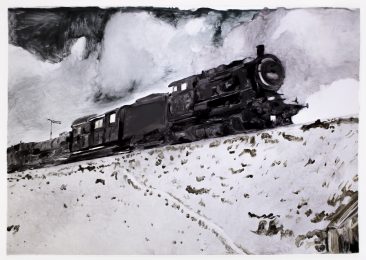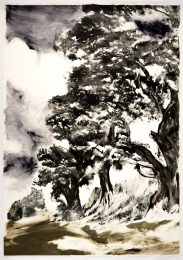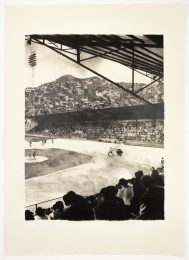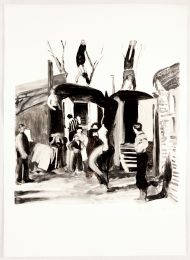Details — Click to read
This series of abstract black and white Roth prints is full of movement, wildly diverse mark making, visceral, three-dimensional shapes and dynamic sketched lines. The artist worked on the same stone, erasing and adding elements with each step of the process to create a new print. Working on a lithography stone allowed him to scratch away areas with precision, revealing tightly hatched white lines that complement swaths of smokey gray. A Muse reflects Roth’s interest in permutations, decay, and a mathematical approach to making images. Each week the artist created a new variant: the series was originally planned as a set of 52.
Dieter Roth, A Muse 1971-1972
series of 12 prints (this set is an incomplete set of ten prints), lithographs from stone printed in black on white handmade paper
image 18.9 × 14.6 in / 48 x 37 cm paper 30.7 × 20.9 in / 78 x 53 cm
edition of 30 each, numbered and signed, 6 artists copies
this series 1/30
printed by Karl Schulz, Braunschweig and published by Petersburg Press, London
weekly variant printed from the same stone, began October 1971
(52 prints were planned, but only 12 were executed)
Condition: excellent with some dimples and wear commensurate with age
Catalogue Reference: Dobke 185-196
Dieter Roth was a printmaker from childhood: his first etching at the age of 16 was scratched into a soda can, and despite the failure of the can to print anything but a shadow of ink, he continued his study and by 20 was a serious apprentice in lithography to a well-known commercial artist, Eugen Jordi. Later he would continue to print and publish much of his own work. From the 1960s onward, his collaborations with Petersburg Press brought him international recognition and produced some of his most celebrated work: Six Piccadillies (1970), and Containers (1972).
Interested in chance and spontaneity, Roth was drawn to make prints using unorthodox means: according to mathematical principles, using equations, or by randomly rearranging blocks before they were run through the press. The artist often printed plates repeatedly in different colors, producing many variations from just a few images. He used the printing press and materials to interrogate the creative process rather than just as tools to achieve an edition of identical prints: for example, overprinting or under-inking, or running objects through the press (in 1968, a box of chocolates). Roth was not just interested in the chance of making pictures but the unpredictability of decay: allowing the grease from slices of meat to slowly contaminate paper, immersing a print in vegetable juice, clamping metal to paper to produce rust, and pouring chocolate over a finished work.
Roth would make hundreds of print editions and books over his career and blurred the line between genres and mediums, embarking on prodigious collaborations and experimentation with music, poetry, art, and literary works.
